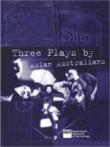 7550240948816764543.jpg
7550240948816764543.jpg
 7550240948816764543.jpg
7550240948816764543.jpg
An adaptation of a physical theatre show that tells the story of performer/writer Anna Yen's grandmother, mother and herself. Blending storytelling, performance, archival footage, and poetic cinematography, Chinese Take Away reveals the story of three generations. The stories are anchored by Anna's desire to understand her mother's life and death.
Source: 'Synopsis' Documentary Australia Foundation
'In “Chinese Take Away” (2000), playwright, performer and co-producer Anna Yen portrays her matrilineal history by tracing her grandmother’s journey from China to Hong Kong, her mother’s from Hong Kong to Sydney and finally her own in contemporary Australia. In so doing, she exposes their suffering from rape, repeated pregnancies and slavery. Drawing on Gayatri Spivak’s essay “Can the Subaltern Speak?” (1988), I consider the women whose stories Yen relates in her play as subalterns. Yen moves from tracing these subalterns’ itineraries, a task Spivak assigns to the “postcolonial intellectual,” to retrieving their voices. By employing the technique of polycharacterisation, Yen opens up a performative site where these women’s stories can be passed on: she constructs their characters on stage, relates their stories and reads their written letters. As a result, their voices are not retrieved decades later by a group of male scholars, namely the ‘Subaltern Studies’ scholars whom Spivak critiques in her essay, but by a woman from the same family. I argue that dramatising these stories in one female performing body becomes an expression of resistance that destabilises the assumption of a fixed image of the Asian woman as a site of sexual appeal, and problematises Spivak’s premise of the inadequacy of the female body to send a message to a receiver. In “Chinese Take Away,” Yen retrieves and empowers her foremothers’ voices as well as resists dominant stereotypes of the Asian woman as submissive and a site of sexual attraction. Furthermore, she negotiates her identity as a playwright straddling two cultures, Asian and Australian.' (Introduction)
'In “Chinese Take Away” (2000), playwright, performer and co-producer Anna Yen portrays her matrilineal history by tracing her grandmother’s journey from China to Hong Kong, her mother’s from Hong Kong to Sydney and finally her own in contemporary Australia. In so doing, she exposes their suffering from rape, repeated pregnancies and slavery. Drawing on Gayatri Spivak’s essay “Can the Subaltern Speak?” (1988), I consider the women whose stories Yen relates in her play as subalterns. Yen moves from tracing these subalterns’ itineraries, a task Spivak assigns to the “postcolonial intellectual,” to retrieving their voices. By employing the technique of polycharacterisation, Yen opens up a performative site where these women’s stories can be passed on: she constructs their characters on stage, relates their stories and reads their written letters. As a result, their voices are not retrieved decades later by a group of male scholars, namely the ‘Subaltern Studies’ scholars whom Spivak critiques in her essay, but by a woman from the same family. I argue that dramatising these stories in one female performing body becomes an expression of resistance that destabilises the assumption of a fixed image of the Asian woman as a site of sexual appeal, and problematises Spivak’s premise of the inadequacy of the female body to send a message to a receiver. In “Chinese Take Away,” Yen retrieves and empowers her foremothers’ voices as well as resists dominant stereotypes of the Asian woman as submissive and a site of sexual attraction. Furthermore, she negotiates her identity as a playwright straddling two cultures, Asian and Australian.' (Introduction)